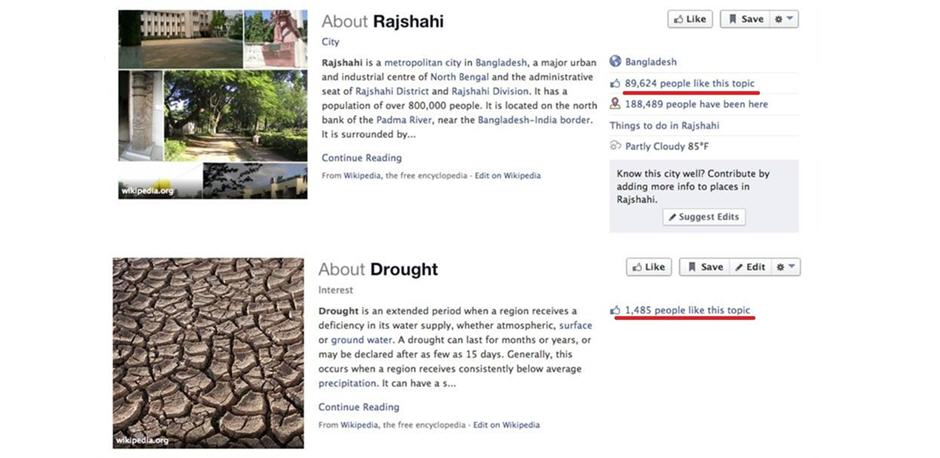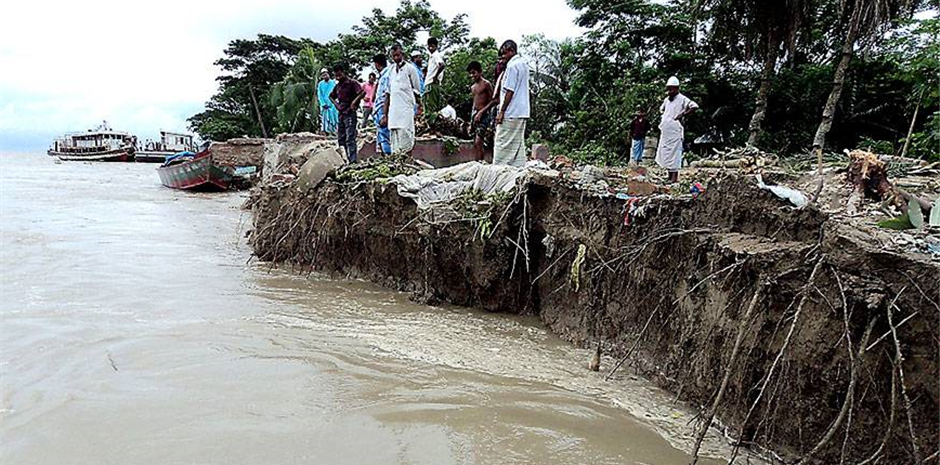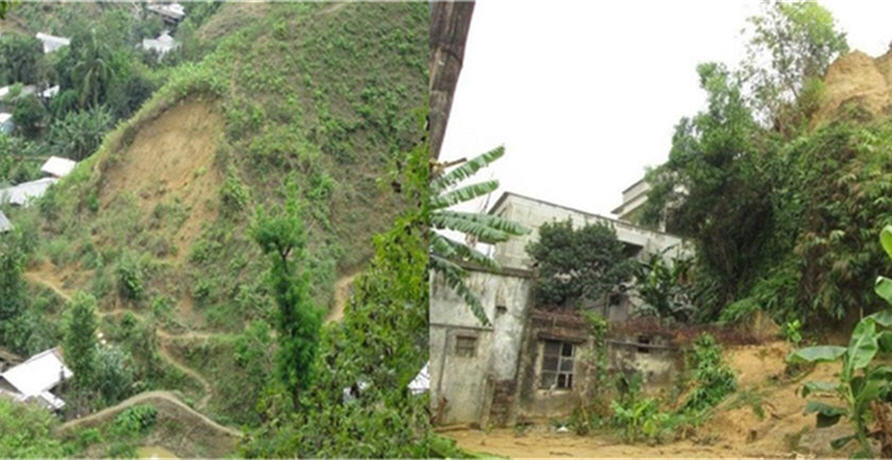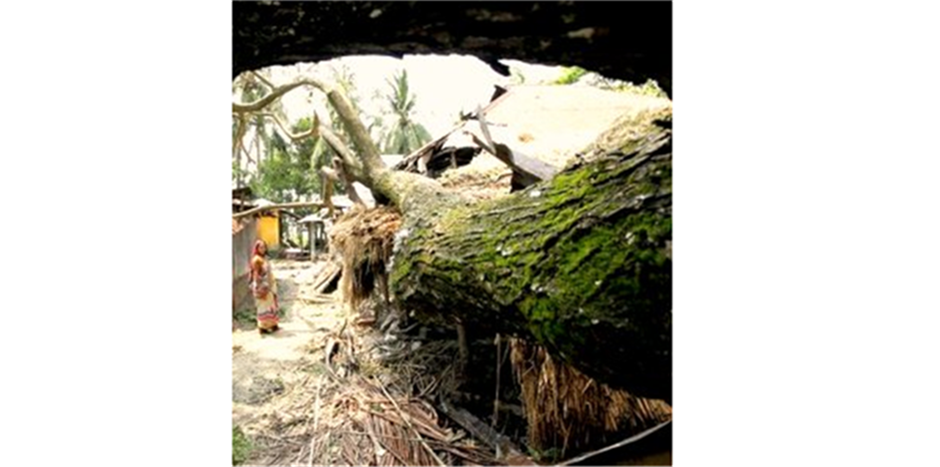Drought; a neglected, catastrophic disaster
Chittagong, Bangladesh
A disaster is a sudden calamitous event that seriously disrupts the functioning of a community or society and causes severe damage to economy and environment (“National Institute of Disater Management” 1).
Certain kinds of disaster occur suddenly, but there are disasters that take time to develop. Drought is an example of a natural disaster that builds over time. Generally it is defined as an extended period in which available water is insufficient for human and agricultural needs.
Though Bangladesh is at a very high risk from drought enough steps are not taken to face the drought in the northern area of the country even after seeing devastating effects of drought in 1972,1975,1981,1982 and so on. Those droughts affected 47 area of the land and 53 of the population (“DEPARTMENT OF DISASTER” 1).
<Br> People in the northern part of the country are suffering from drought currently. They don’t get rainfall often. People are suffering from heatstroke, high temperature, lack of usable water, dehydration and a lot more.
The city Rajshahi is a part of huge drought affected northern area. Almost every socio economic and environmental aspect is hampered by drought; agricultural sides are affected too. Rajshahi is famous for seasonal fruits specially mangoes. But in the year 2009, there was a fall of 30% in mango production due to drought. Farmers complained that the green mangoes fell down due to lack of rain and high temperature (“India Environmental Portal” 1).
This is a loss that also affects the economical side. Moreover, the annual rainfall has drastically decreased in this region. Dr. Samiran Das, an inhabitant of Rajshahi who is currently working at AUW as a professor of Environmental Science, recalls in an interview, “when I was young huge amount of rainfall used to take place in Rajshahi, but now, the amount is very low during the last few years” (Das).
Moreover, Rajshahi is facing shortage of water nowadays. I am from Rajshahi and according to my experience, in the dry seasons, the people of Rajshahi struggle to get water in house during afternoon.
As it has appeared so far, there are no sudden effects of drought. But the effects are not less dangerous than other natural disasters.
According to Dr. Das, “drought is opposite to flood, but it takes time to develop. Its effects are not less than flood or other natural disasters. It can be considered as a slow poison. We cannot see it happening instantly, but it causes life-threatening damages" (Das).
The nature of drought creates a question itself; if it has no sudden effects, how would people know it is happening? The answer lies in its nature itself. As it takes a long time to develop, people get a long time to take precaution which is better than being ready to mitigate the effects of a disaster and waiting for it to happen.
An organization called BMDA is working hard to mitigate and take precaution against drought in the Barind tracts which also include Rajshahi. They are making ponds to store water, increasing irrigation, supplying water through deep tube wells, etc. (Saiful 1). Rainwater harvesting is done in Godagari, Rajshahi to deal with drought.
In this regard, it must be mentioned that heavy rainfall has occurred during May to September in that region and the rest of the year remains dry (Masum 173). Each year a conference called NBDC takes place on drought at the University of Rajshahi.
The experts come up with a lot of solutions every year. But the question is whether these are enough for facing drought.
A study suggests, although the nature of drought is devastating in Bangladesh, it has received much less attention from researchers than flood and cyclone. One researcher found out only 11 titles on drought against 156 against flood and 54 for cyclone (Paul 1).
Even though the government has set up many policies and lots of experts have given many solutions on facing drought, why is it still creating catastrophic effects in lives? Although the government has taken may policies to face drought, most of them are not executed.
The government issued lands for planting trees and making ponds, but in reality multistoried buildings stand on those places. The developers are filling up the remaining ponds for construction and no one prevents them from doing so. But it won’t be wise to blame the government only as it is not possible to face a natural disaster just by a governing body.
Public awareness is highly needed in this regard. But sadly, most of the general people in Rajshahi don’t know about drought and moreover, no steps are taken to make them aware of it. Many schools provide their pupils with knowledge of flood, tsunami, cyclone and every other disasters but drought. Many NGO’s and non-profitable organizations organize competitions on facing the flood, cyclone and typhoon affected area which ultimately spread knowingness on those disasters, but rarely, they go for drought affected area, which would have encouraged them to learn about droughts and its effects, and would ultimately create an awareness.
The picture shows that the number of likes in the drought page of facebook has a ratio of approximately 1:9 to the number of likes in Rajshahi (“Rajshahi” 1; “Drought” 1). Though this picture doesn’t provide precise data, lack of awareness can clearly be seen.
People do plant trees in the opening of different human-welfare programmes, but forget to save them in the long run. They do know about saving water, but they keep their taps and showers open even after they are done working with it. If they knew that they are the ones who are going to suffer in the future, they would have been more careful. When they face water scarcity, they rely on the deep tube wells and satisfy their immediate wants. Though these tube wells give them relief immediately, ultimately, its unilateral usage causes the decrease of water level.
Professor Das says in this regard, “It can be said without doubt that deep tube wells are a huge source of water, but continuous usage of ground water without recharging it can lead to worse situation” (Das).
In order to avoid the future sufferings, we should start thinking about recharging the ground water. To recharge the ground water and to face drought we need more ponds, trees and grassy lands and we also need to save the existing greenery. People can also consider making tubs in their rooftops to store rainwater. Moreover, the television channels can consider telecasting advertisements about encouraging people to preserve water and use it according to their needs.
Generally cyclones and floods are considered most harmful disasters in Bangladesh. But sometimes drought can be more dangerous than these disasters and it can also hamper people in wider area. Enough precautions are not taken to face drought although it has devastating features.
We should take immediate steps before the situation gets worse as we don’t want our next generation to be in an environment which lacks water, an essential element to stay alive. We want them to witness the picturesque nature of Bangladesh and we want to provide them an environment enriched with every facility so that they can focus in the development of the country. Not only the government, but also the public should come forward and act in reality to meet this crisis instead of being limited just in thesis papers and unattended policies.








